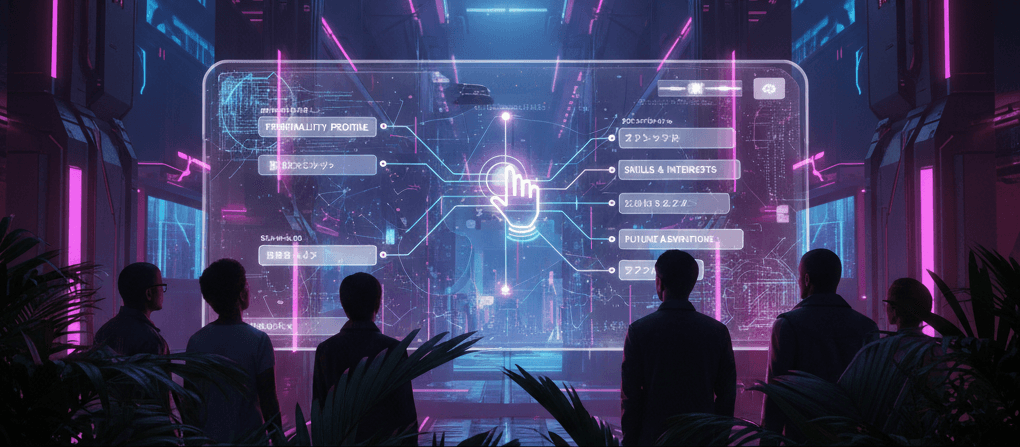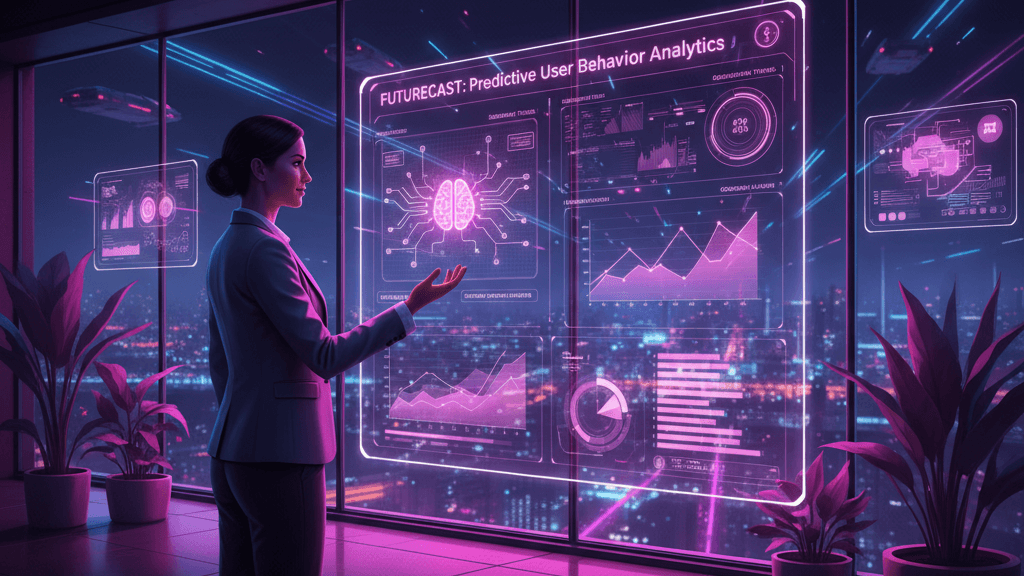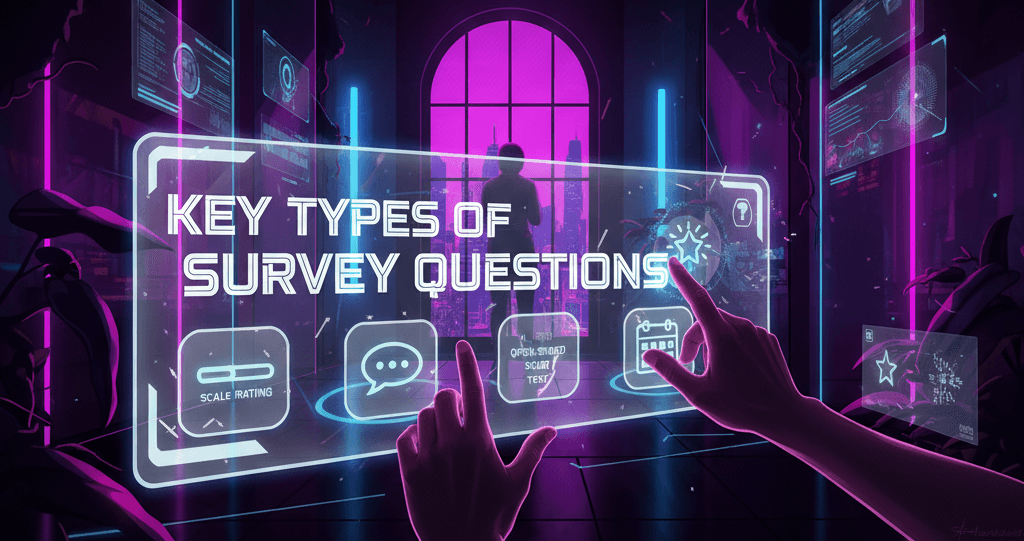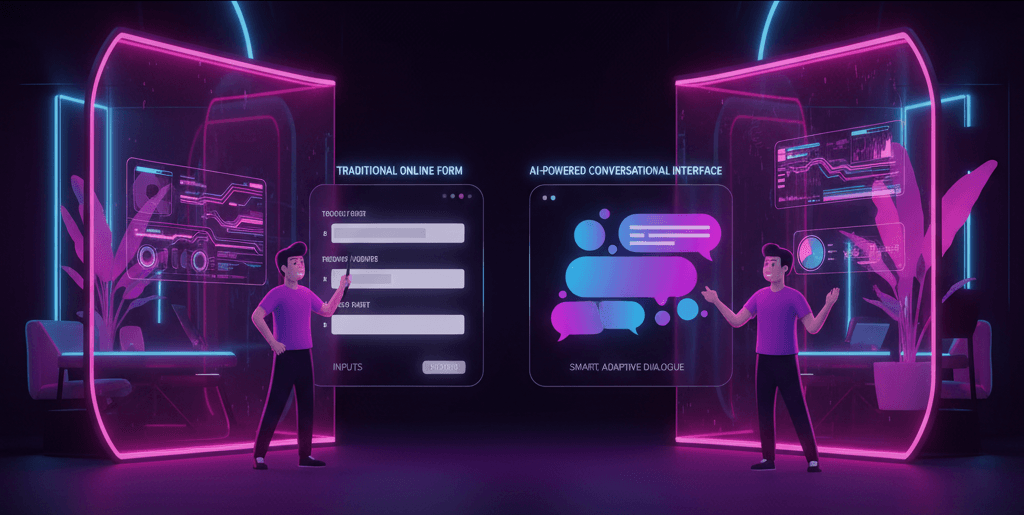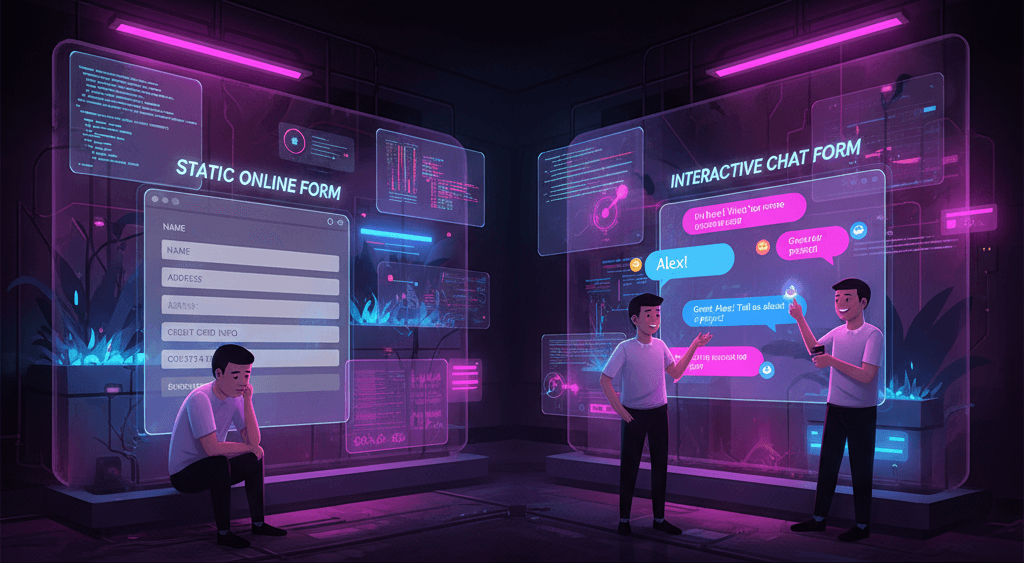Introduction: The Evolution of Customer Communication
Customer communication has come a long way. In the past, businesses communicated through phone calls, printed catalogs, and in-person visits. Today, the landscape is entirely different.
Customers reach brands via email, social media, live chat, messaging apps, and even voice-activated devices, and they expect instant, consistent responses across all of them.
This shift demands not just a presence across channels, but integration, a unified, seamless experience where every interaction feels connected.
This is where omnichannel communication becomes essential.
In this blog, we will cover the following topics:
- Understanding Multi-Channel vs. Omnichannel
- The Modern Customer Journey: Nonlinear, Multi-Touch
- Key Benefits of an Omnichannel Strategy
- Risks of a Disconnected Customer Experience
- Essential Components of an Omnichannel Communication System
- Technology Stack Needed for Omnichannel Success
- Common Implementation Challenges and How to Overcome Them
- Case Studies: Brands Excelling at Omnichannel
- How to Build an Omnichannel Communication Strategy
- Best Practices for Delivering a Seamless Experience
- Measuring Omnichannel Success: KPIs That Matter
- Future Trends in Omnichannel Customer Communication
- Conclusion: Investing in Customer-Centric Growth
Understanding Multi-Channel vs. Omnichannel
At a basic level, multi-channel communication means being available on multiple platforms: you might have a website, an Instagram page, an email newsletter, and a customer service phone line.
However, if those channels don’t “talk” to each other, the customer experiences them as separate silos.
Omnichannel communication, in contrast, links all your customer-facing touchpoints together.
No matter where the customer starts, say, a chatbot, and ends, say, a call with a service agent, the context, history, and personalization are preserved throughout.
Omnichannel is about continuity. Multi-channel is about presence. And in 2025, continuity wins customer loyalty.
The Modern Customer Journey: Nonlinear, Multi-Touch
Today’s customer journey is anything but linear. Instead of moving step-by-step from awareness to purchase, buyers navigate a complex web of interactions across multiple platforms and devices.
A potential customer might first discover a brand through a casual scroll on social media, captivated by an influencer’s recommendation or a targeted ad.
From there, curiosity often drives them to research the brand further, checking reviews on third-party platforms like Google, Trustpilot, or Yelp to validate trustworthiness.
Once initial interest is established, the customer may visit the brand’s official website, browse products, compare pricing, and even add items to their shopping cart.
However, it is increasingly common for customers to abandon carts mid-process, distracted by other tasks, seeking better deals, or simply needing more time to decide.
Brands that leverage retargeting techniques, such as sending a personalized email reminder or offering a limited-time discount, often succeed in re-engaging these hesitant shoppers.
Yet, even after reengagement, the path to purchase might involve further steps. A mobile push notification could nudge the customer back into action, or a quick conversation with a customer support representative, either via live chat or social messaging, might be necessary to resolve final doubts before the sale is completed.
An effective omnichannel strategy recognizes that customers fluidly move between these channels and expects seamless continuity at every touchpoint.
If a customer has already communicated with a chatbot on Facebook Messenger, they shouldn’t have to repeat their issues when reaching out via email or live chat. Every previous touchpoint should inform the next.
Ignoring the nonlinear nature of modern journeys results in fragmented, frustrating experiences, which often lead to lost sales, damaged brand perception, and missed growth opportunities.
Key Benefits of an Omnichannel Strategy
Implementing a true omnichannel strategy yields powerful, tangible benefits that go far beyond customer convenience.
First and foremost, it leads to enhanced customer satisfaction. When businesses provide seamless, consistent experiences, customers feel understood and valued.
They don’t have to waste time repeating their history or re-explaining their needs across multiple channels. Instead, the service feels personalized and intelligent, fostering emotional loyalty.
Another significant benefit is the increase in Customer Lifetime Value (CLV).
Numerous studies have shown that omnichannel customers spend anywhere from 15% to 30% more than customers who interact with a brand through only a single channel.
They are more engaged, more likely to return, and more inclined to recommend the brand to others. The result is a healthier, more predictable revenue stream over the long term.
Operational efficiency also improves dramatically with an omnichannel approach. When teams are aligned around shared customer data, workflows become streamlined.
Duplicated efforts, such as multiple agents handling the same issue in different channels, are minimized.
Customer inquiries are resolved faster, and resources are deployed more effectively, driving down costs and increasing team productivity.
Strong omnichannel experiences also nurture brand loyalty. Consistency across touchpoints builds trust.
Customers are more likely to stick with a brand that reliably meets their needs across online stores, mobile apps, social media, and in-person locations.
In an era when switching brands is often just a few clicks away, that consistency becomes a crucial competitive advantage.
Finally, unified communication channels offer brands deeper and more actionable insights. Instead of fragmented data silos, businesses gain a 360-degree view of customer behavior, preferences, and pain points.
This holistic understanding fuels smarter marketing campaigns, more relevant product development, and superior customer service strategies, creating a continuous loop of improvement and customer satisfaction.
Risks of a Disconnected Customer Experience
While the rewards of an omnichannel strategy are substantial, the risks of ignoring it are equally severe. One of the most immediate consequences is frustrated customers.
Few experiences are more aggravating than having to repeat the same information to multiple agents across different channels.
When systems don’t communicate, the burden of continuity shifts onto the customer, and many will simply walk away rather than endure the friction.
Disconnected communication also leads directly to lost sales. If a customer encounters inconsistent messaging, unresponsive service, or gaps in their buying journey, they are far more likely to abandon the purchase altogether.
In the digital marketplace, where attention spans are short and competition is fierce, a single broken link in the customer journey can undo months of brand-building.
Beyond lost revenue, a fragmented customer experience can seriously damage a brand’s reputation.
In today’s hyper-connected world, a negative experience can be broadcast widely across review sites, social media, and private networks, amplifying its impact far beyond the original customer.
Reputation loss is not easily repaired, and it can severely limit growth opportunities.
Finally, operational inefficiencies skyrocket when customer communication is disjointed. Support teams waste time piecing together incomplete histories, duplicating efforts, and compensating for system gaps.
This drives up service costs while simultaneously degrading service quality. Over time, the inefficiency eats into margins and erodes profitability, creating a vicious cycle that can be difficult to escape.
In an age where customers expect immediacy, personalization, and consistency, disconnected experiences are more than just an annoyance, they are a serious competitive threat.
Brands that fail to address this risk will find themselves losing ground rapidly to more agile, customer-centric competitors.
Essential Components of an Omnichannel Communication System
A true omnichannel communication system isn’t simply about being present across multiple channels; it’s about creating a unified, consistent experience across every customer touchpoint. To achieve this, several essential components must work in harmony.
At the core is a Centralized Customer Data Platform (CDP), a unified database that consolidates all customer information, interactions, and preferences.
Instead of fragmented data scattered across systems, a CDP ensures there is a single, trusted view of the customer that informs every interaction.
Complementing this is a Unified CRM System, accessible to all teams, including sales, marketing, and support.
Every customer record must be consistently updated across departments, ensuring no disconnects, no duplicated efforts, and no gaps in understanding.
This unified view allows teams to act on the most current information, delivering a seamless experience regardless of who is interacting with the customer.
An effective system also requires Integrated Communication Tools.
Every channel the customer engages with, from chatbots and live chat to email campaigns, social media DMs, and call centers, must be connected. Conversations started on one platform should continue smoothly on another without losing context.
To elevate customer experiences further, Personalization Engines play a critical role.
These engines analyze customer behavior, past purchases, and preferences to tailor interactions, product recommendations, and messaging to each individual. Personalization transforms generic outreach into meaningful engagement.
Finally, Seamless Handoffs are critical for maintaining fluid experiences. When a customer shifts from interacting with a chatbot to a human agent, the transition must be effortless.
The human agent should have full visibility into the chatbot conversation to avoid redundancy and frustration.
Ultimately, omnichannel success is not measured by the number of channels a business offers; it’s determined by how well these channels integrate, communicate, and collectively serve the customer.
Technology Stack Needed for Omnichannel Success
Powering an omnichannel strategy requires more than just isolated tools; it demands a carefully constructed, interconnected technology stack designed to share data and create consistent experiences.
At the foundation are CRM Systems such as Salesforce or HubSpot. These platforms serve as the primary repository for customer profiles, ensuring that every team works from the same version of customer history and current engagement status.
Alongside CRMs, Marketing Automation Platforms like Klaviyo and Marketo are crucial.
They enable brands to send personalized, timely, and behavior-driven campaigns across email, SMS, and push notifications, ensuring messaging stays relevant and consistent throughout the journey.
For direct customer interactions, Live Chat and Messaging Tools such as Intercom or Zendesk Chat provide real-time communication across websites and mobile apps.
These tools are essential for engaging customers when questions arise, nurturing leads, and resolving concerns on the spot.
Contact Center Software solutions like Five9 or Genesys Cloud handle more complex customer service needs, offering voice support, IVR (Interactive Voice Response), and omnichannel ticket management, critical for high-volume environments.
Social Media Management Tools, including Sprout Social and Hootsuite, allow businesses to monitor conversations, engage customers, and maintain brand presence consistently across Facebook, Instagram, Twitter, LinkedIn, and more.
Finally, a Customer Data Platform (CDP) like Segment or Tealium ties it all together.
CDPs integrate data from every tool and touchpoint, creating a real-time, unified customer profile that informs marketing, support, and sales efforts.
Selecting flexible, API-friendly solutions is crucial. Rather than building a rigid, monolithic system, businesses should focus on technologies that easily integrate and share data, allowing them to adapt quickly as customer expectations evolve.
Common Implementation Challenges and How to Overcome Them
Despite the clear benefits, implementing an omnichannel system comes with real challenges. Recognizing these obstacles early and planning for them is key to success.
Challenge 1: Siloed Data
Many businesses struggle with fragmented systems where customer data exists in separate tools that don’t communicate. This creates inconsistent experiences and inefficiencies.
The solution is to invest in unified platforms from the beginning and prioritize data integration. Building an architecture around shared data ensures every team has access to complete customer insights.
Challenge 2: Team Alignment
Even the best technology fails without cross-functional cooperation. Often, marketing, sales, and support teams focus only on their individual KPIs, leading to disjointed customer journeys.
To solve this, businesses should create cross-functional teams responsible for the entire customer journey, rather than isolated channel performance. Shared goals promote collaboration and ensure continuity across touchpoints.
Challenge 3: Technology Overload
The temptation to adopt every promising new tool is strong, but it often results in a bloated, inefficient stack where tools don’t integrate properly.
Companies should avoid chasing every new technology. Instead, they must strategically select solutions that work well with their existing systems and truly serve the overall customer experience.
Challenge 4: Measuring the Right Metrics
Many organizations fall into the trap of measuring only channel-specific KPIs, such as email open rates or website clicks. While useful, these metrics do not reflect the overall customer experience.
The focus must shift to journey-wide metrics like customer satisfaction scores (CSAT), Net Promoter Scores (NPS), Customer Lifetime Value (CLV), and retention rates. Measuring what truly matters ensures that efforts are aligned with long-term business growth, not just short-term wins.
Case Studies: Brands Excelling at Omnichannel
Nike has mastered the art of omnichannel retail by seamlessly integrating its app, website, retail stores, and customer service. Customers can browse online, check real-time inventory at local stores, reserve products, and complete purchases in the way that suits them best.
Personalized recommendations through the Nike app are informed by previous purchases and browsing behavior, making the experience feel tailor-made.
Apple is another leader in omnichannel strategy. Their support ecosystem is tightly integrated across web support pages, live chat, phone service, and the Genius Bar in physical Apple Stores.
Customers can begin troubleshooting online and easily transition to a phone call or in-person appointment without losing any context. Apple’s ability to sync customer information across channels ensures a consistently high level of service.
Bank of America demonstrates how omnichannel can transform even traditionally slow-moving industries like banking.
Their customers can initiate a mortgage application online, continue the conversation via mobile app chat, and complete the process in-person at a branch, all without needing to re-enter personal information.
The integration of mobile, web, and physical branches creates a truly frictionless financial experience.
These examples highlight an important truth: omnichannel excellence isn’t reserved for tech giants.
Any business, regardless of industry, can design integrated, customer-centric experiences that build loyalty, drive growth, and outpace competitors.
How to Build an Omnichannel Communication Strategy
1) Audit Existing Channels
Identify gaps and inconsistencies.
2) Define Your Customer Journey
Map all possible touchpoints and pain points.
3) Unify Customer Data
Centralize customer profiles and histories.
4) Invest in Integration-Friendly Tools
Prioritize platforms that communicate seamlessly with each other.
5) Personalize at Every Touchpoint
Use data to make interactions more relevant and timely.
6) Train Your Teams
Ensure all departments understand and align with the omnichannel vision.
7) Start Small, Scale Fast
Pilot with two or three integrated channels, then expand.
Best Practices for Delivering a Seamless Experience
1) Consistency Matters
Ensure your brand voice, visuals, and promises are consistent everywhere.
2) Respect Customer Preferences
Let customers choose their preferred communication channel and honor it.
3) Respond Quickly
Speed is non-negotiable across all channels.
4) Focus on Mobile
Most interactions today happen via smartphones. Mobile optimization is critical.
5) Make Handoffs Invisible
Switching from one channel to another should be effortless for the customer.
Measuring Omnichannel Success: KPIs That Matter
1) Customer Retention Rate
Are more customers staying longer?
2) Satisfaction (CSAT) and Net Promoter Score (NPS)
Are customers happy with their experience?
3) Customer Lifetime Value (CLV)
Are customers spending more over time?
4) Channel Engagement Rates
How are customers interacting with each channel?
5) Resolution Time
How fast are issues being solved, regardless of channel?
You can regularly measure, analyze, and refine your strategy based on these insights.
Also Read: How ZinQ Helps You Understand Your Audience?
Future Trends in Omnichannel Customer Communication
Looking ahead, several trends are shaping the future:
1) AI-Powered Personalization
Expect even more tailored, predictive interactions across channels.
2) Voice and Conversational Interfaces
Smart speakers, voice assistants, and chat-based commerce will grow.
3) Hyperautomation
Automation will not just respond but also anticipate customer needs proactively.
4) Data Privacy-First Design
Customers increasingly demand transparency and control over their data.
Staying ahead of these trends will be critical for long-term success.
Conclusion: Investing in Customer-Centric Growth
Omnichannel communication is no longer optional, it’s a strategic necessity.
In a world where customers expect effortless, personalized, and consistent experiences, businesses that can deliver across every touchpoint will thrive.
Investing in an omnichannel strategy isn’t just about technology, it’s about creating deeper, more meaningful relationships with customers.
The brands that prioritize unified communication today will be the brands customers remember and choose tomorrow.




